Crafting Community
Ishinomaki Lab helped rebuild a city in Japan after the 2011 tsunami. Now, a partnership with a Michigan makerspace again demonstrates the power of design.
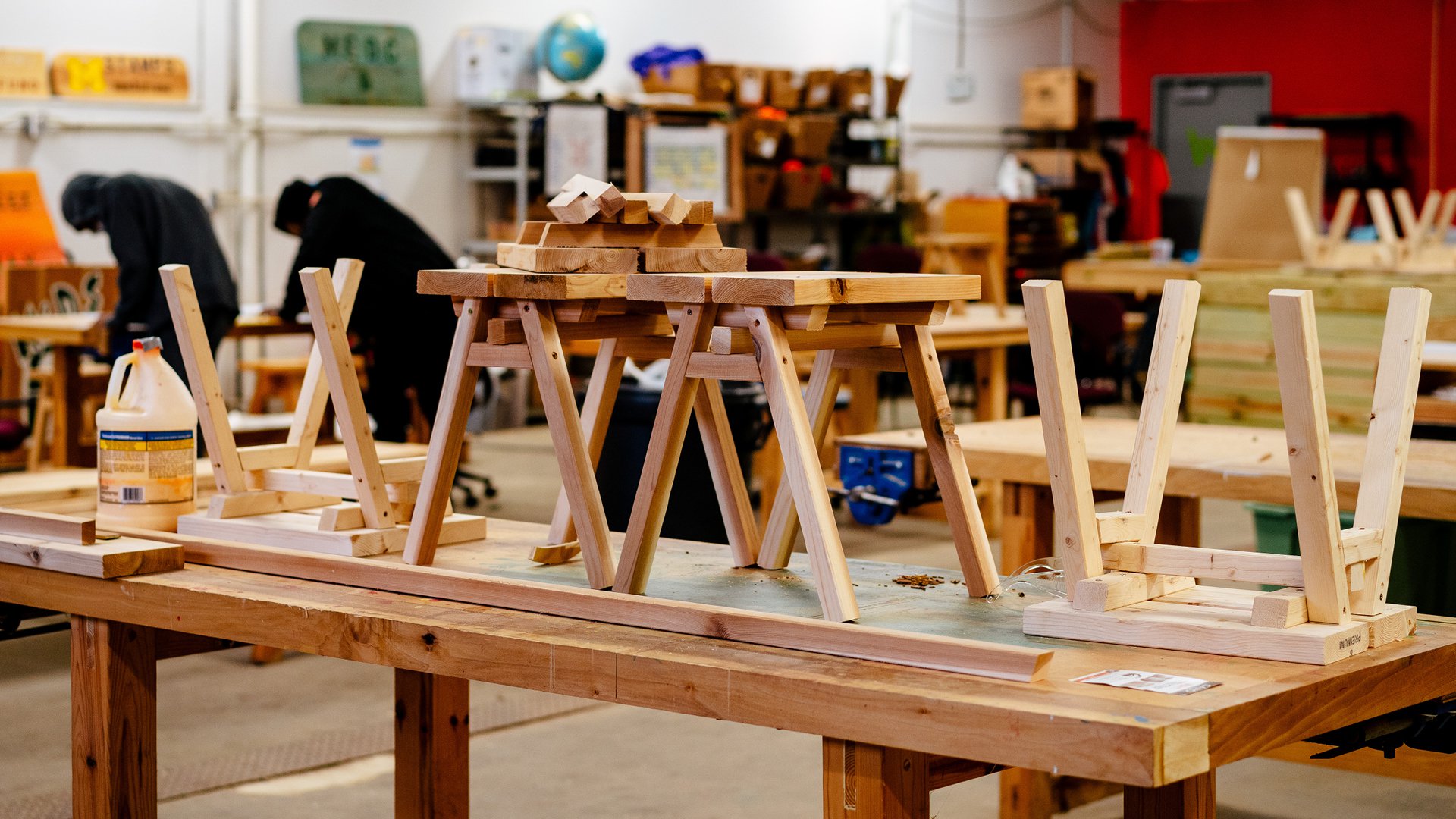
At the Brightmoor Maker Space, students assemble products designed by Ishinomaki Lab.
The Ishinomaki bench is deceptively simple. With a frame shaped like the letter “A” and two planks screwed on top, it seems to be little more than a companion to your average picnic table. But this simplicity is what’s allowed it to travel from its birthplace in Ishinomaki, Japan, to restaurants, homes, schools, shops, and offices around the world. There’s a version of this bench in front of Blue Bottle Coffee in Shibuya, in a stylish London design shop, and at a bakery in northwest Detroit. But the bench’s relative simplicity belies its backstory. It was born from the aftermath of a natural disaster and its structure, materials, and construction are such that anyone can make it with common hardware store materials and tools.
When a magnitude 9.1 earthquake rumbled in the Pacific Ocean near northeast Japan in March 2011, tsunami after tsunami hit the coastal city of Ishinomaki. Some were as high as twenty-eight feet, and tossed trucks as if they were Tonka toys and leveled neighborhoods as they swept a horrific three miles inland. Three thousand two hundred people died. A decade later, the survivors still grieve and search for closure. Reconstruction has since remade the city—fortress-like sea walls now hug the coastline and new homes, schools, and businesses have steadily replaced the wreckage—but in the immediate aftermath, a different sort of building took place.
Just days after the earthquake, Tokyo-based architect Keiji Ashizawa traveled to Ishinomaki to help one of his clients survey the damage to a restaurant he designed in 2010. As they were cleaning up the space, he noticed how quickly another restaurant down the street was able to reopen after its owner and a group of volunteers with serious carpentry skills worked around the clock. Each night, the place was packed until midnight. It occurred to Ashizawa that other businesses faced materials and labor shortages that hindered their ability to reopen with the same swiftness, so he hatched a plan: arm as many people with DIY skills as he could. “Designing things is part of my life and it is a great joy in my life to be useful,” Ashizawa says. Within three months of the tsunami, he opened the Ishinomaki Lab community workshop in a vacant storefront in the center of town. Ashizawa cooked up elegant, practical designs that could be made with standard-size cuts of lumber, basic tools, and very little construction experience, and started teaching anyone who wanted to learn how to make them. He wasn’t the first to have this idea—Enzo Mari and Victor Papanek built bodies of work on similar notions—but his invention was applying it to disaster relief. “At the time, most people had very serious memories that they wanted to forget,” Ashizawa says. “When we can concentrate on making things, you get satisfaction from what you’ve created.”
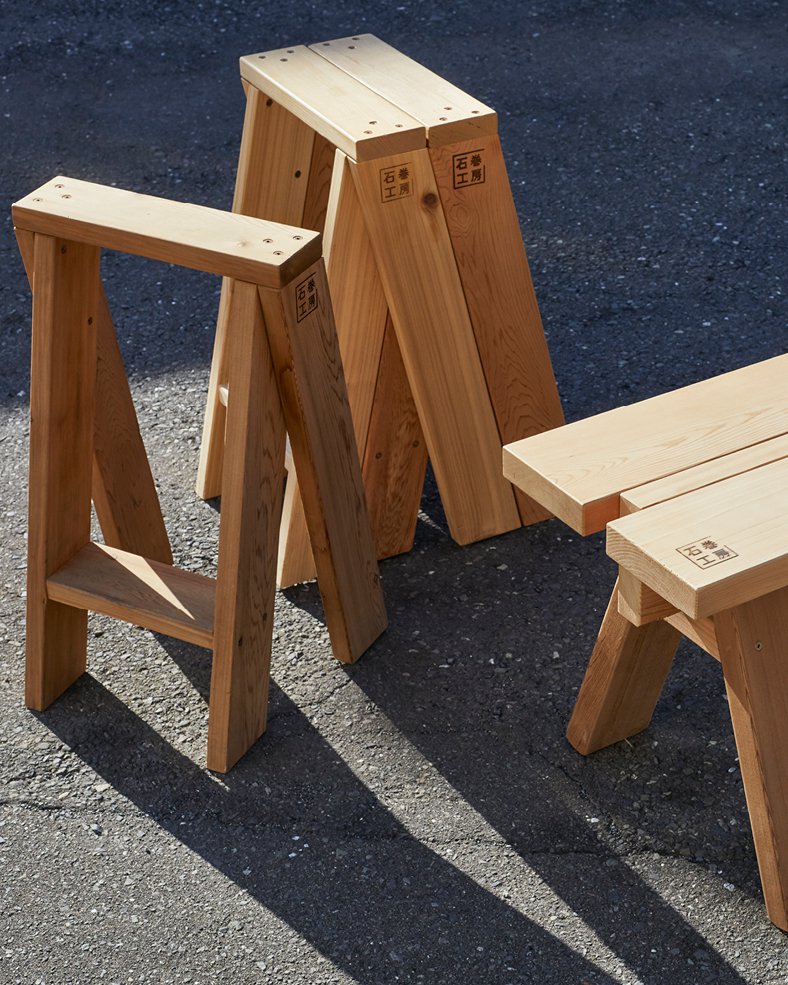
Ishinomaki Lab’s AA Stool and Bench are designed to be made with simple hardware store materials and tools. / Photograph: Monster Smith/Hirotsugu Hoshikawa
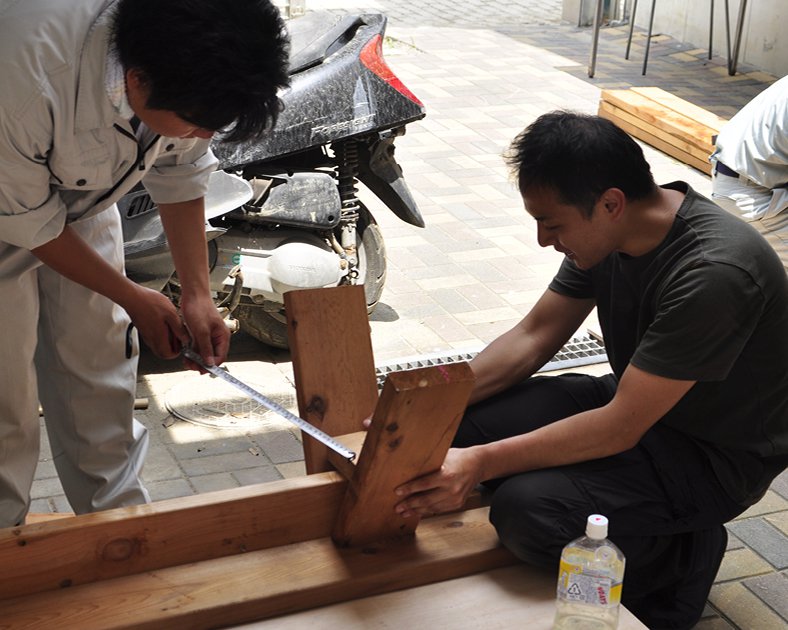
Ishinomaki Lab founder Keiji Ashizawa (right) initiated bench-making workshops to help heal the community after the earthquake and tsunami.
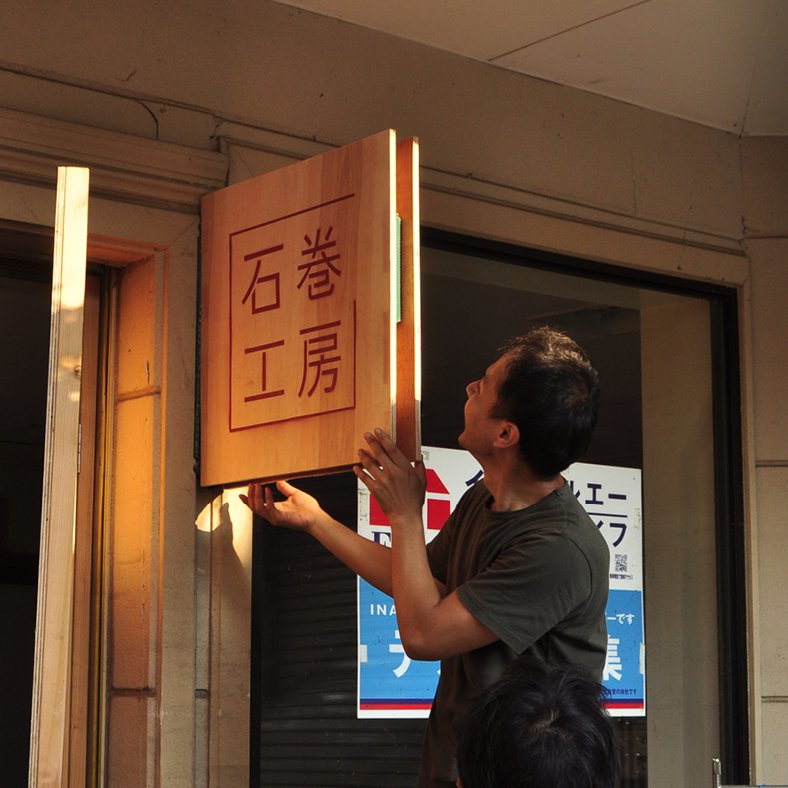
Ishinomaki Lab’s sign says “Ishinomaki Kobo.” The space is meant to be one of experimentation, hence the use of “Lab” in the English translation.
Ashizawa’s sentiment speaks to the power of design to enrich people’s lives not just as a finished good with beauty and utility, but also through the act of learning and making. A work of design can be infused with what Charles Eames would call goodness all the way down—“to want the materials to be good, the package to be good, the delivery to be good, the printed matter, the office, the plant,” he told the Magazine of Art in 1951. “And really to want the hours of each employee on the job to be good—and good for him or her; make the life of the employee on the job a happy one, the steps are clear, and the relation of morale to goodness of product will take care of itself.” Taken as a whole, it represents a design’s ability to transform more than a space.
In the decade since it began, Ishinomaki Lab has put its hometown on the map through design. Designers and students from all around the world have visited the lab—which has moved into a bigger workshop that is a three-minute walk from a hybrid hotel, cafe, and showroom the Lab designed—bringing more creative jobs and tourism to the city, which was facing a depopulation crisis before the 2011 tsunami. The namesake bench can be found in businesses and public spaces all around town and has become a beloved symbol of the city. Meanwhile, Ashizawa’s presence at design fairs around the world led to a novel distribution concept. Ishinomaki Lab’s global network of “Made in Local” workshops in Manila, Singapore, Berlin, London, Guadalajara, Busan, Copenhagen, and Detroit were established to produce and sell the company’s designs for shoppers in their respective regions. While the Lab and its designs emerged from tragedy, they’ve become universally beloved totems that transcend their somber beginnings. “The Lab’s designs inspire many people,” Ashizawa says. “That makes me the most proud.”
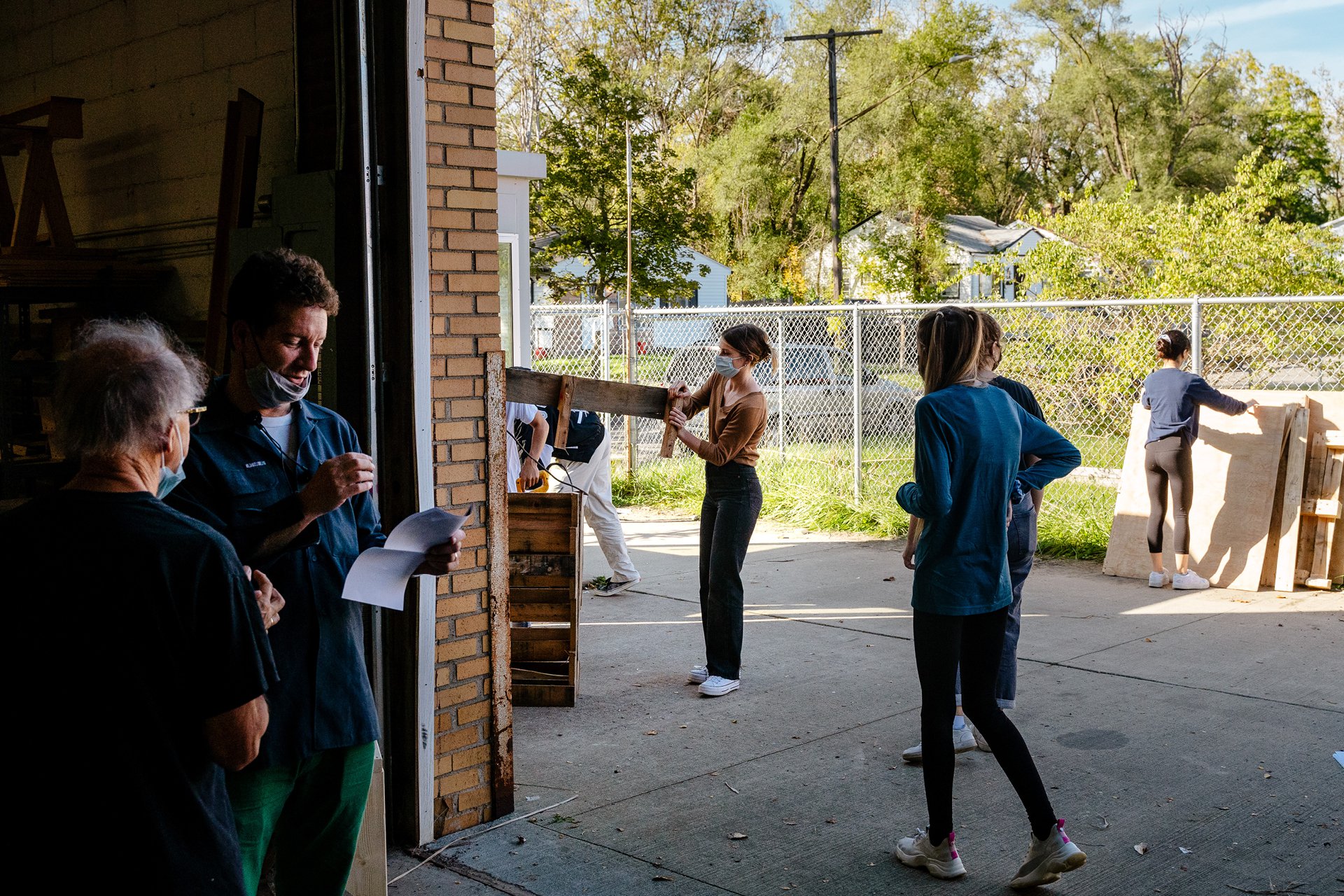
Halfway around the world, a similar story about design’s ability to heal a community is playing out.
In 2009, Nick Tobier and Bart Eddy established the Brightmoor Maker Space, a community workshop in northwest Detroit that builds furniture, hand-chisels wood signs, and fixes bikes. In 1970, there were close to 26,040 people living in this four-square-mile neighborhood; now there are about 9,000. Over the last fifty years, Brightmoor has experienced a population change, from a mostly working-class white neighborhood to one that is majority Black and where the average income is $30,000 a year—though many of the area’s families live on substantially less. On many Brightmoor blocks, vacant lots, boarded up homes, and collapsed shells of buildings make it seem as though a war or natural disaster struck. The aftermath of a decades-long social crisis and a tsunami look shockingly similar. However, many of the neighborhood’s residents have remained and have worked to rebuild their community. Downtown Detroit has received billions of dollars worth of reinvestment, but in Brightmoor, as in many of the city’s outer neighborhoods, the street lights still don’t work.
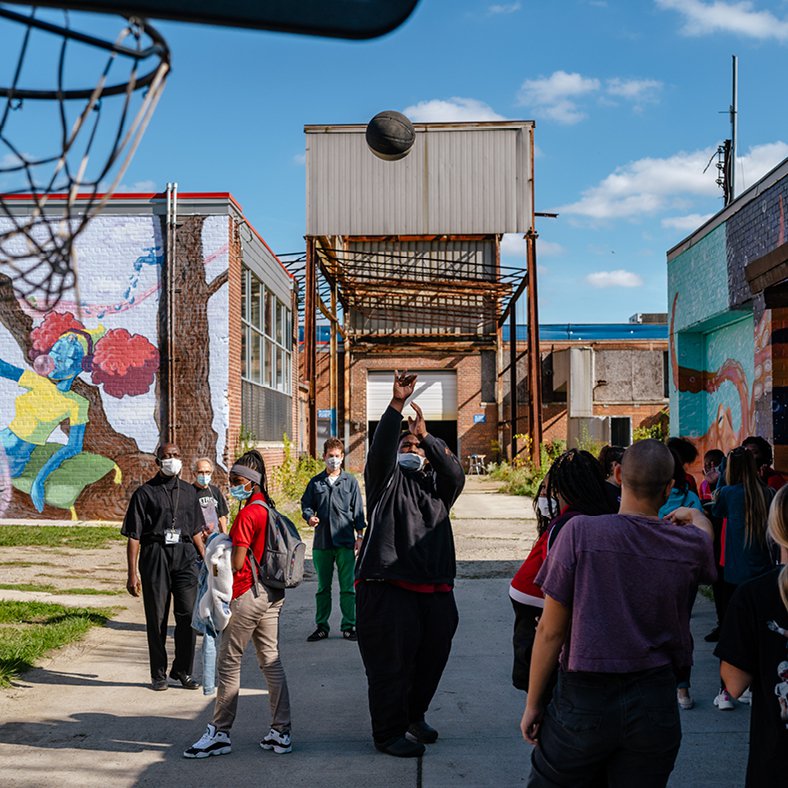
Tobier also teaches at the University of Michigan and his students learn alongside the youth in the Maker Space. On breaks, the group shoots hoops.
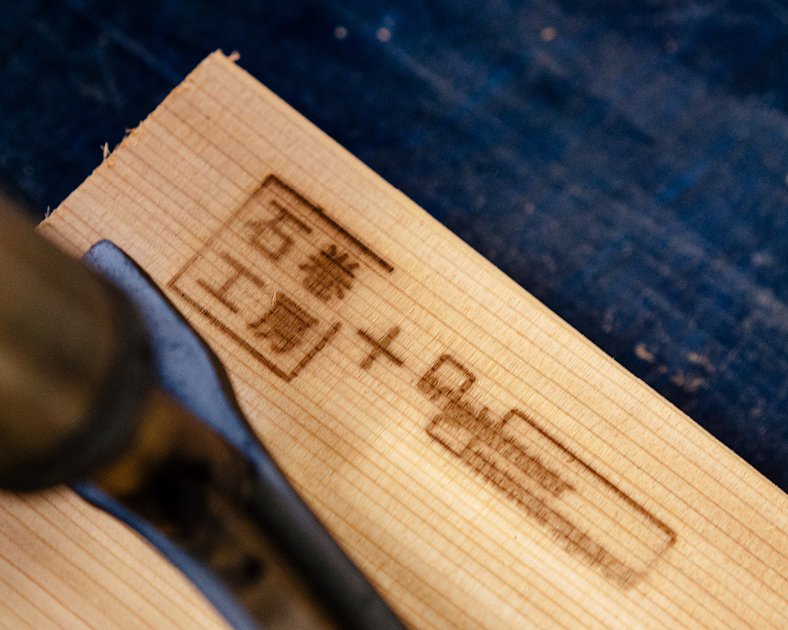
Before completed Ishinomaki Lab furniture leaves the Brightmoor Maker Space, it receives this brand—a combination of the two organizations’ logos.
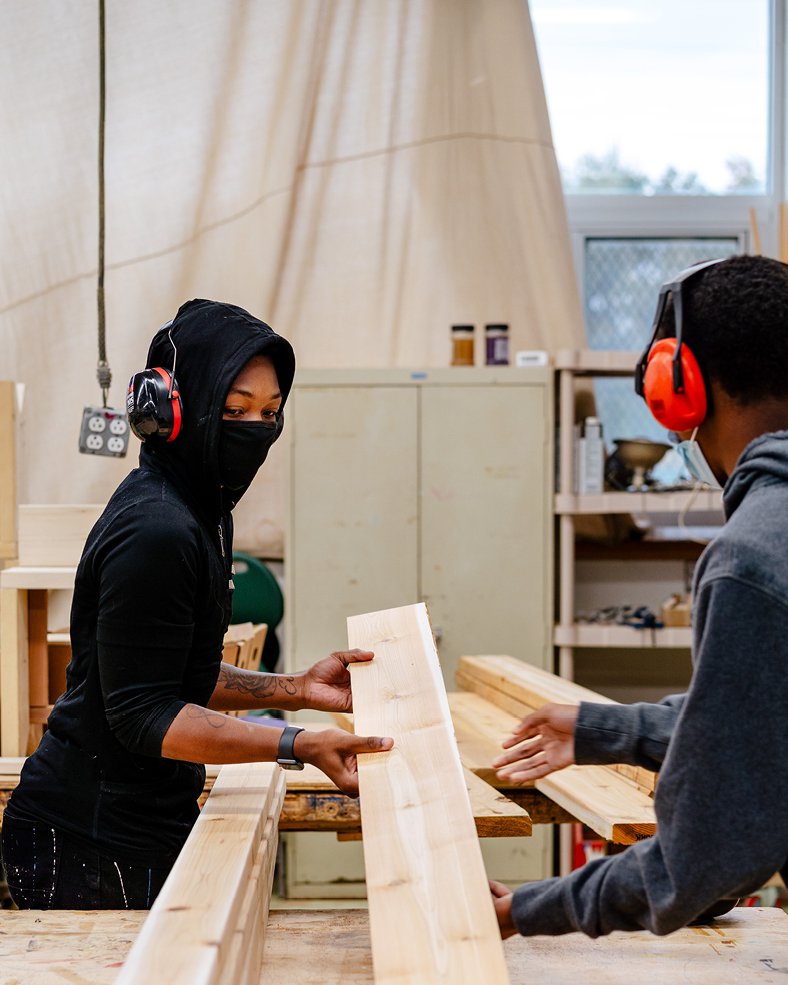
While the Ishinomaki Lab furniture looks simple, it passes through many hands at the Brightmoor Maker Space. The first step is milling the wood.
The Brightmoor Maker Space was founded in the abandoned garage of a house on Dacosta Street, a stretch of Brightmoor which has attracted do-it-yourselfers who have built urban farms, rain gardens, and parks on the vacant lots where houses once stood. Tobier, who is a professor at the University of Michigan, bought a few one-dollar paint cans from a hardware store, and he and the students painted the clapboards pink, green, and white and started building simple benches that have since ended up on vacant lots all around the neighborhood and are symbols of community and presence. “The more people see we’re taking care of something, the better it is for the whole neighborhood,” Tobier says. On Burt Road, a block south of Fenkell Avenue, the neighborhood’s main drag, there are three white-painted benches and a lectern in a lot that serves as an outdoor prayer corner. A few blocks away, a spiral-shaped bench circling an oak tree offers a perch for quiet contemplation. Down the street from there, a bench with a green-painted seat holds court in a vacant lot with tree stumps lining the perimeter. The benches are democratic pieces of furniture by nature, a shared seat that invites interaction.
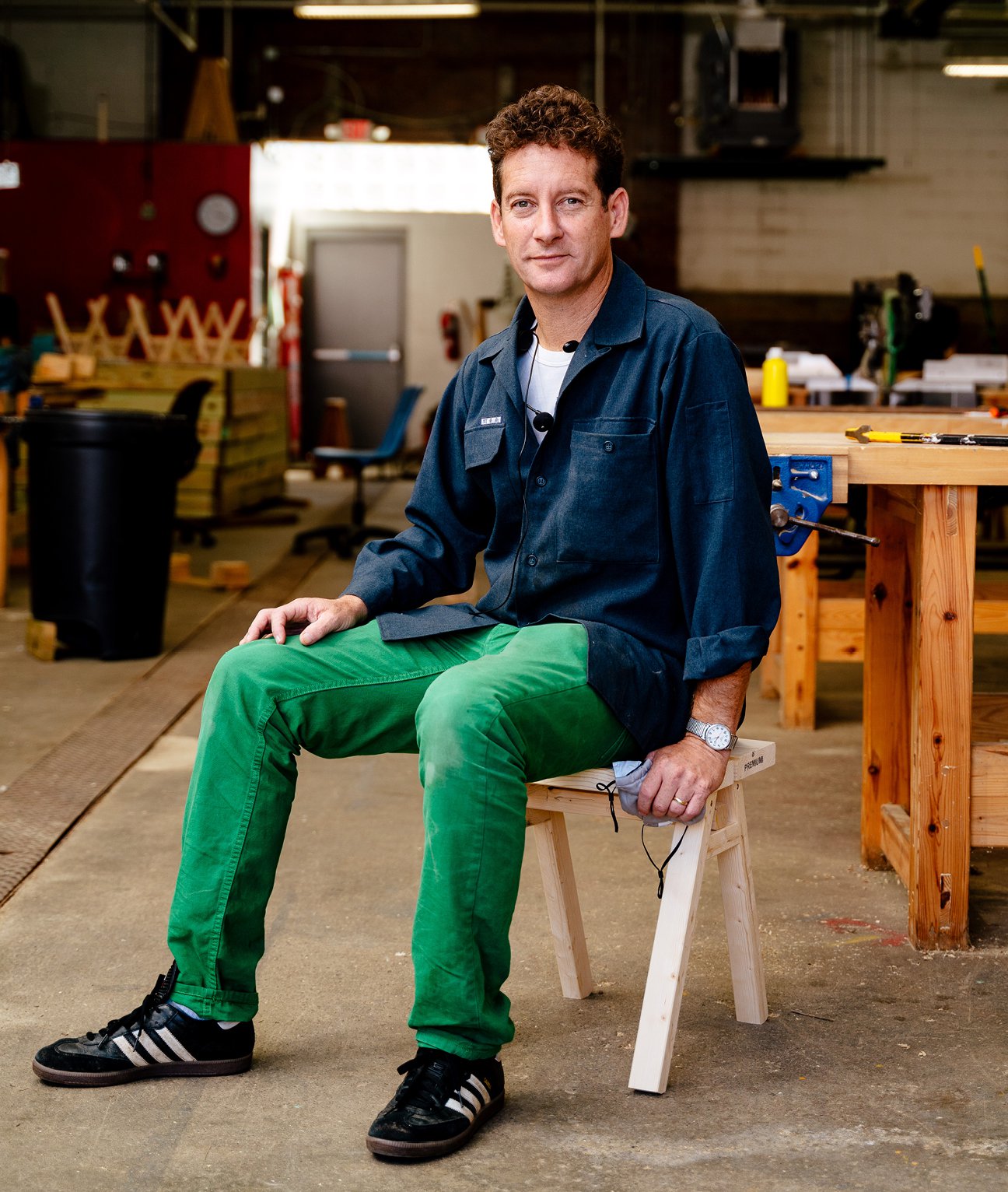
The Ishinomaki furniture looks so simple, but each thing is touched fifteen times and nothing is random.
Nick Tobier
Professor
School of Art & Design, Michigan University
In 2015, Tobier learned about Ishinomaki Lab by way of the Center for Japanese studies at the University of Michigan, struck up a conversation about their respective work, and found many similarities. A couple years later, Ashizawa visited the workshop, which had relocated to an unfinished portion of the Detroit Community Schools campus. He demonstrated how he made Ishinomaki furniture, and saw firsthand what the Maker Space was doing. “It reminded me of our original passion or mission,” Ashizawa says. That serendipitous creative exchange eventually led to a Made in Local partnership. The Maker Space, which operates after school, on weekends, and during the summer, attempts to fill some of the void by teaching students creative problem solving, teamwork, and skills. Plus, the students who work there earn a wage, starting at $10 an hour when they first begin to learn, but moving up to $30 for the more experienced roles.
At 8:30 on a rainy Saturday morning, a crew of current and former students from the charter school filed into the Maker Space’s mural-covered yellow-brick building. The students—along with Walt Swanson, a furniture maker and instructor, and his spaniel Betsy—were in the homestretch of completing a special order of Ishinomaki stools and benches destined for a private client outside of Philadelphia, and were busy sanding, sawing, and drilling away. The client requested cedar wood instead of the more economical pine that the woodshop usually uses, and the wood’s distinctive aroma perfumed the space.
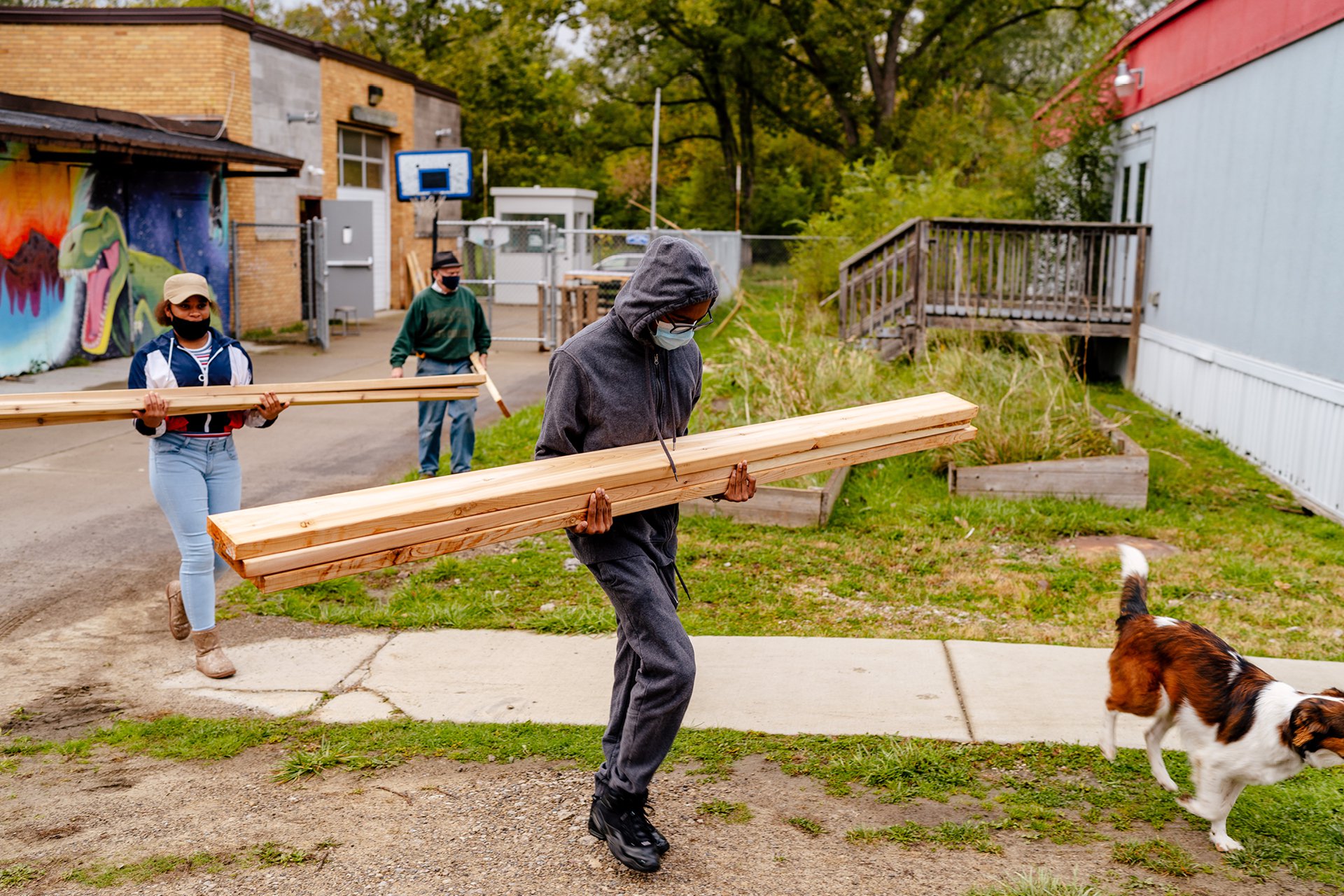
The workspace is set up similarly to the one in Ishinomaki, with centralized benches in a large open space. At Brightmoor, the workbenches are dedicated to each step in the fabrication process, with students rotating between the benches depending on their assignment for the day. In Ishinomaki, a single craftsperson handles a product from start to finish. Swanson brings over planks he flat-planed in a space across a courtyard with a basketball hoop before it’s brought into the shop to be sawed down to size. Leon Bray, who graduated from school in June and has stayed on to work, was scoring cuts in order to trim the legs that would eventually be used in Ishinomaki stools to a precise 30 degrees using a jig. (The first iteration of the Ishinomaki stool used a 22.5 degree angle, a measurement based on folding the corners of a piece of paper together twice instead of using a specialized tool.) “When I started working here, it was my first job ever. I was excited and nervous,” Bray says. “It’s kind of nice to learn new skills for later on in life.” Then the pieces move to the next station where they receive a rough sanding before assembly. The pieces are then finely sanded before they’re sealed and set off to their new homes. “The Ishinomaki furniture looks so simple, but each thing is touched fifteen times and nothing is random,” Tobier says. “Teaching that level of craft is something that will take a long time to get.” And that learning process is an end in its own right.
Walt Swanson and Lauren Bridges making the AA Ishinomaki Stool in the Brightmoor Maker Space.
Lauren Bridges, who is 17 and now in 11th grade, began working in the Maker Space this year. Her friends in the program told her how fun it was, so she wanted to see for herself. In just a few months’ time, she’s built an outdoor classroom, Ishinomaki benches, and desks that were donated to the Detroit Leadership Academy to help with online learning during COVID-19. “The woodshop is amazing to me,” she says. “I like that we all work as a team. If someone doesn’t know what they’re doing and needs help, we can ask each other to figure out what we need to do. At some jobs, everybody doesn’t get along. Here, none of us have an attitude, we get along, it’s fun.” That spirit of camaraderie was put to the test when Bridges recently learned how to make an Ishinomaki bench. “When I first saw the bench, I thought it was going to be hard to make,” Bridges says. “But after Walt went through the steps, I thought it was pretty easy. I’m proud of myself for actually building it since I didn’t think I was going to be able to.” One weekend in December, Bridges’s grandfather, who builds furniture as a hobby and now lives in New Mexico, visited the Maker Space and helped sand wood and get a few desks started. “I was excited he came since I wanted him to see what I can do,” Bridges says. “I never thought I was going to do any of this kind of work, but it really feels like something I will be doing for the rest of my life.” Bridges thinks she might pursue furniture making professionally after she graduates.
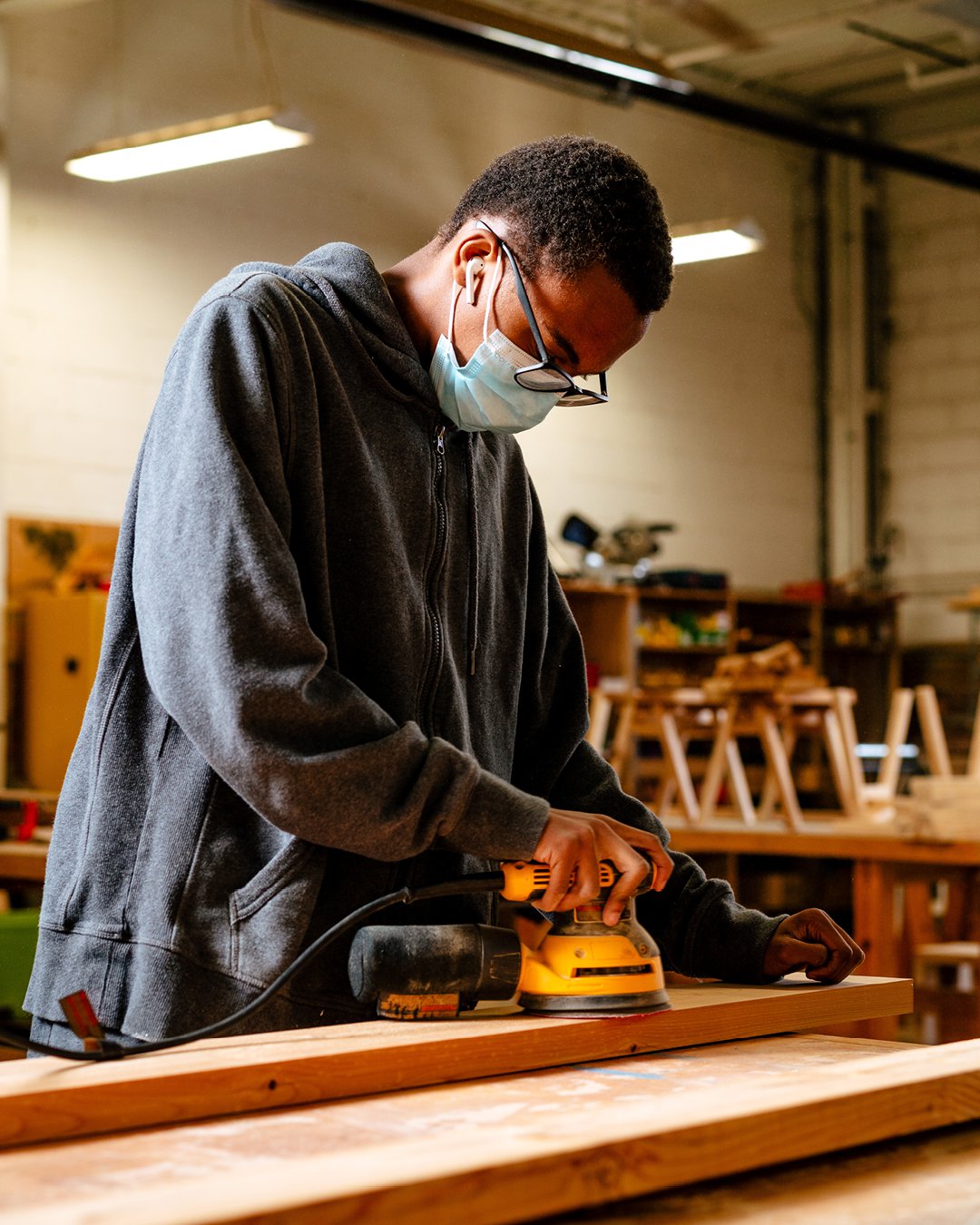
Nathaniel Williams, 16, sands and routers the edges of the just-milled wood planks.
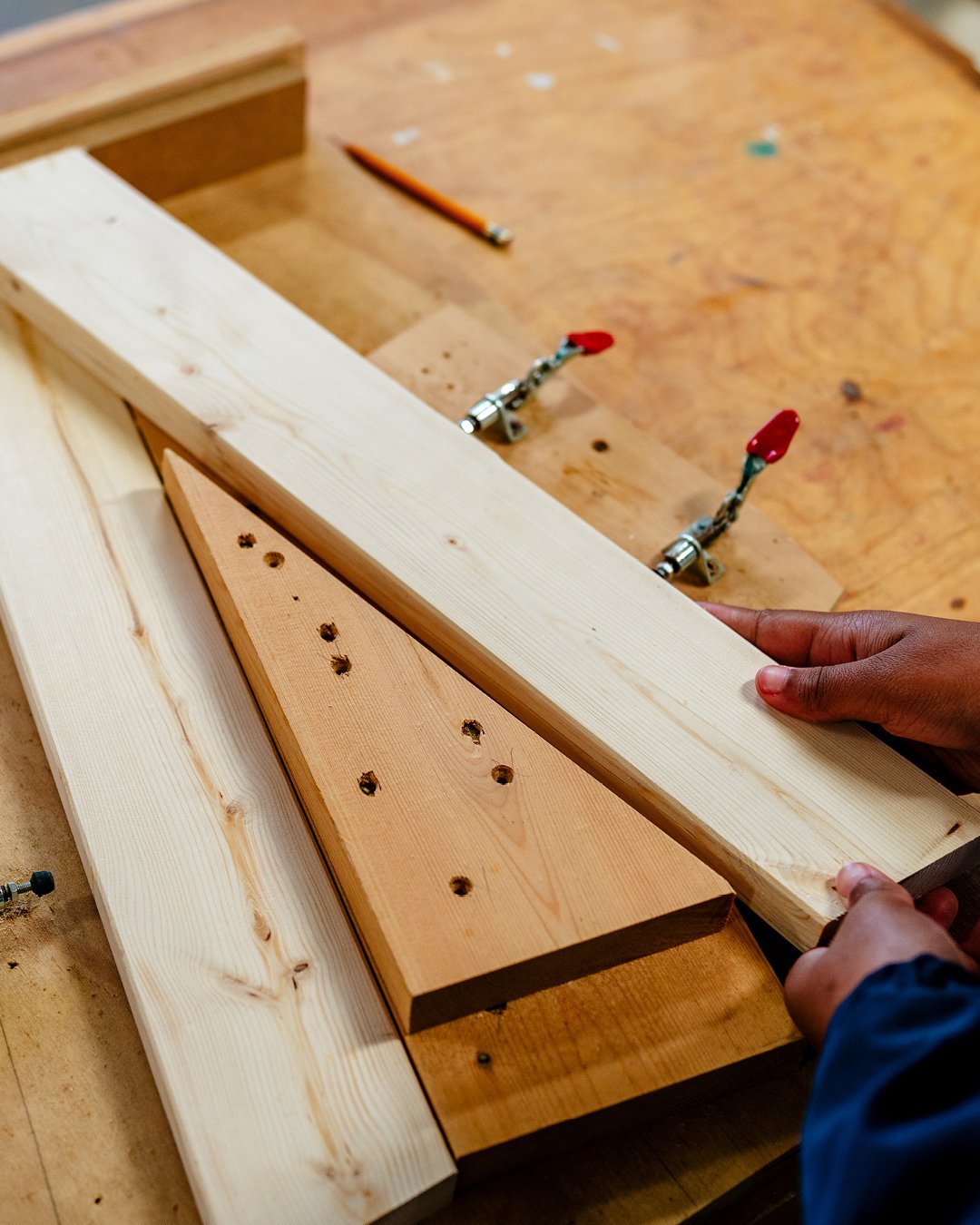
Custom jigs help the Maker Space cut furniture components to exact size. This piece is for a Tall AA Stool leg.
Rosalyn Flint, a retired social worker, used to come to Brightmoor in the 1980s and 1990s since many of the children she worked with lived in the area. In 2016, after she retired, Flint started an urban farm and opened a community-oriented business, the Urban Country Tea House, in the neighborhood. She’s commissioned wood signs from the Maker Space for her business, and respects the work that they’re doing. “The most important part is giving young people skills that otherwise wouldn’t have any,” she says.
Some recent Maker Space projects include desks for students who had to work at home during the pandemic, and an outdoor classroom and theater at St. Suzanne’s Church. The space has been used varyingly as a venue for mayoral candidate debates, as a platform for outdoor drive-up Sunday services (the pastor broadcasts his sermon over AM radio that each parishioner can tune into), and a site for outdoor yoga. The Maker Space also donated three benches to Sweet Potato Sensations, a popular bakery in the area, which needed more seating as it shifted its business outdoors. These projects were made to fill the community’s need for space and furniture, and there’s also mutual benefit to the person who made them: contributing to the community is a source of pride. Jayshawn Young has been working with the Maker Space for about seven years, and now spends more of his time in the sign shop. “It’s fun to learn to make things from the ground up,” Young says. “I get to make things for other people, and sometimes my work travels around the world. It feels pretty special.”
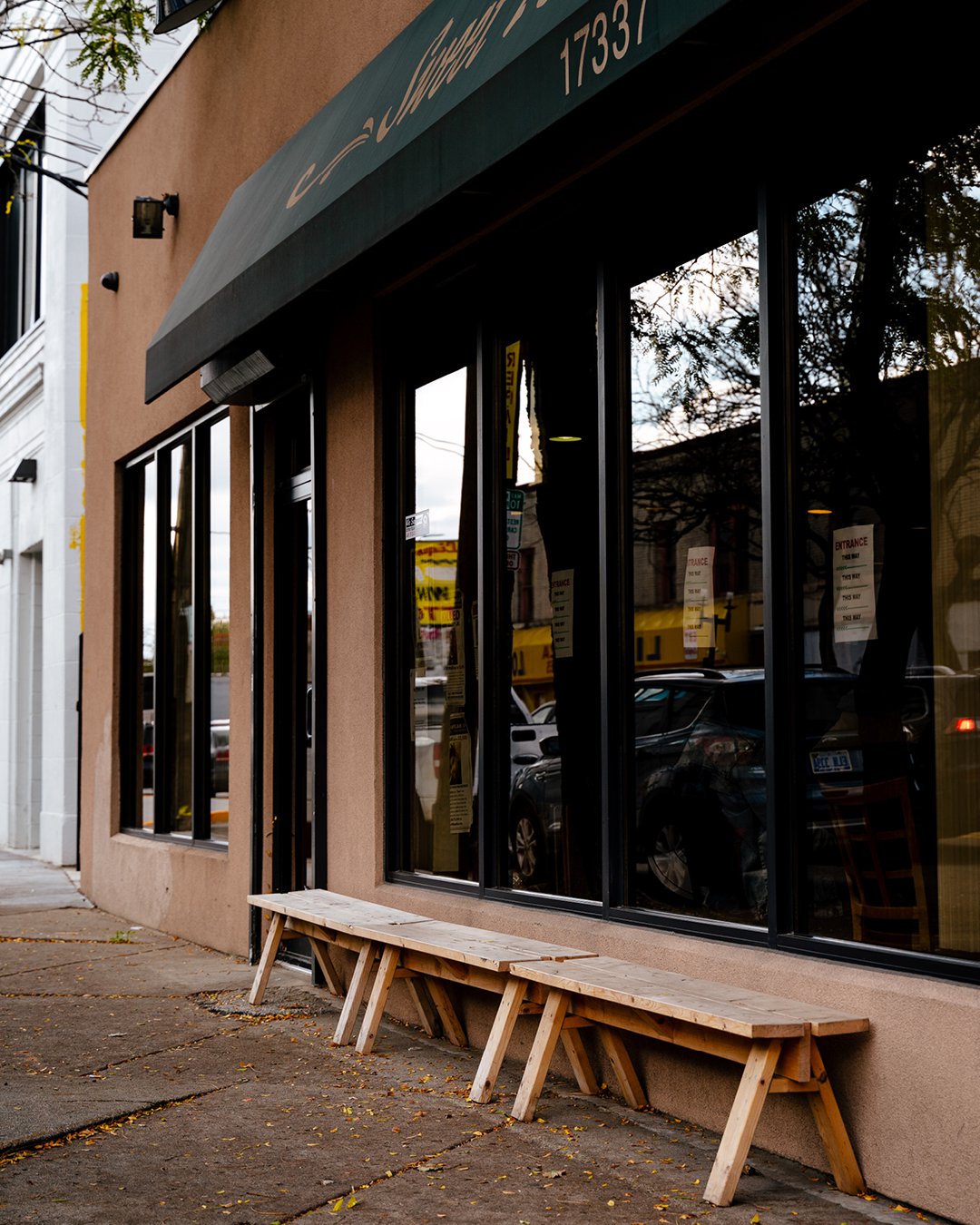
Sweet Potato Sensations received a trio of benches donated by the Brightmoor Maker Space during the pandemic for customers to eat outside.
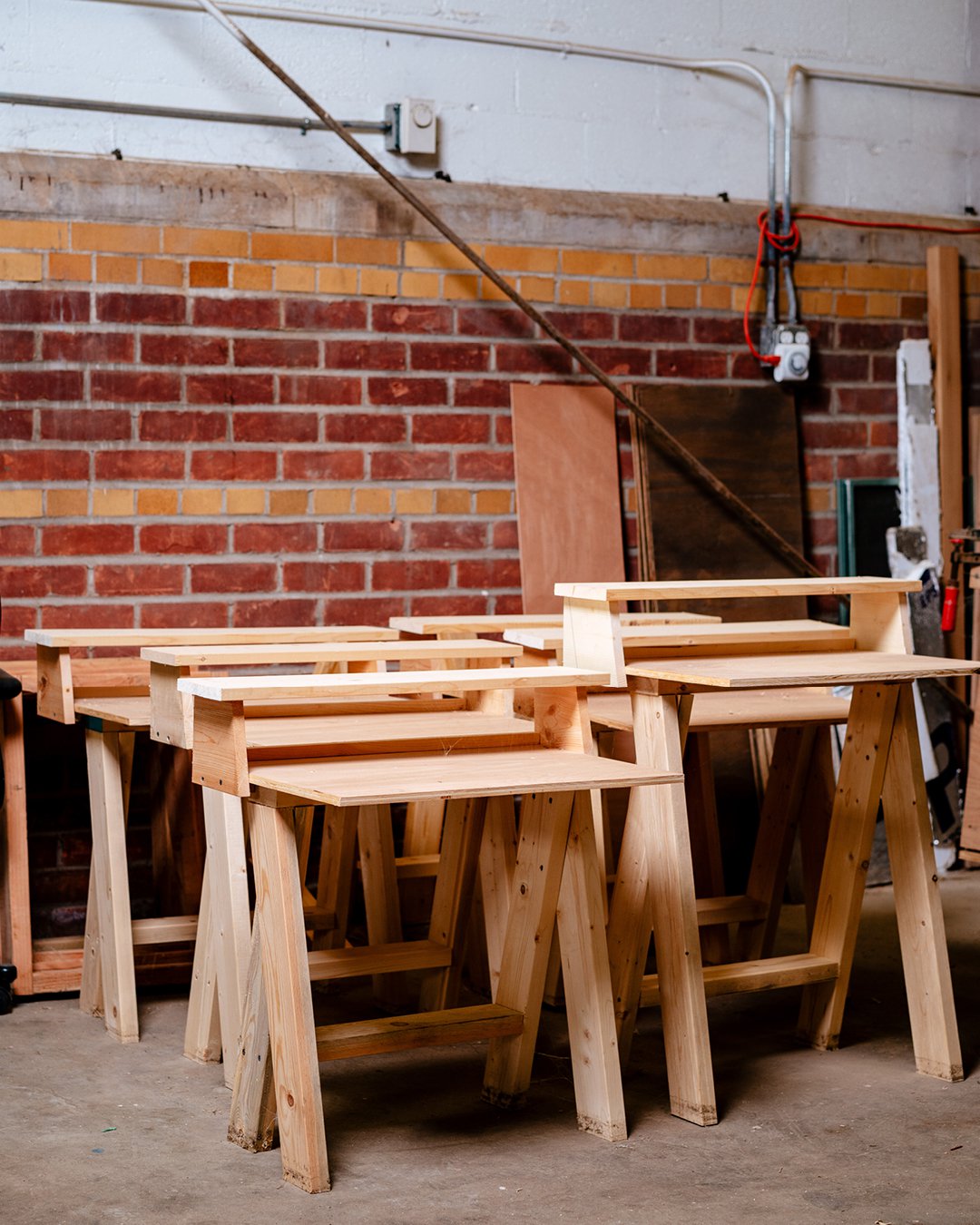
The Maker Space adapted the AA Stool design on these desks, which were donated to the Detroit Leadership Academy.
The Maker Space’s growth has been organic, and its presence in the community is an act of perseverance. Sales from the Ishinomaki furniture as well as grants fund the program and the wages it offers the students. “We’re always at risk of losing money, but we’re never at risk of closing,” Tobier says. What makes the program sustainable is in the community it builds. After all, it’s grassroots efforts that often make the most impact. One of the reasons Tobier started the Maker Space is because he experienced firsthand how fulfilling it was to build things collaboratively. Before the Maker Space, he practiced as an artist, building kinetic sculptures, but the reciprocity involved with the cycle of teaching and learning enriched his life in a way that a solo practice didn’t. “I realized that the kind of project that means something has a relationship attached to it,” Tobier says. “The Maker Space matters more to me than anything else I do. It's taken over my life in a way that I'm really happy about.”
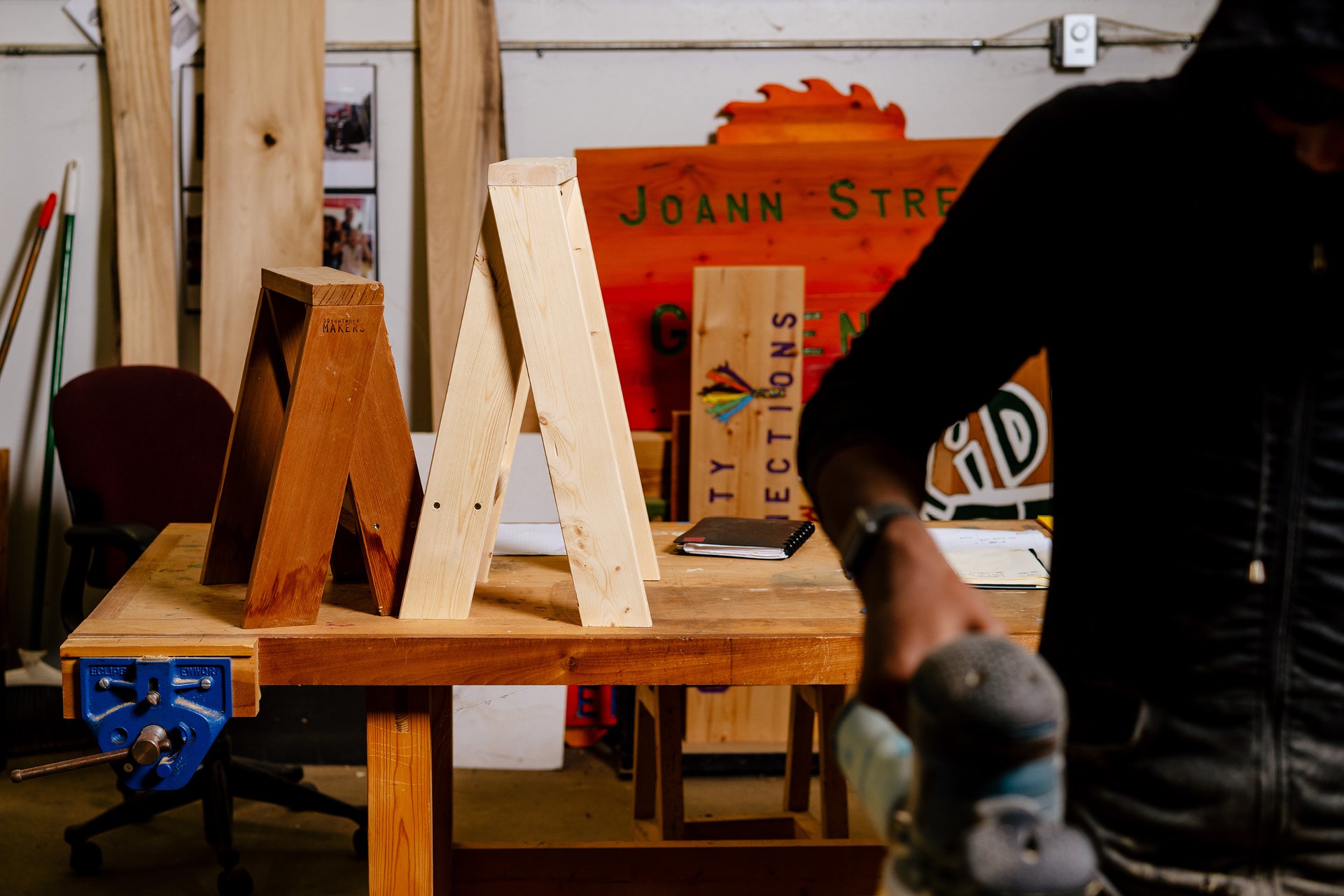
In many ways, design is a feedback loop: By shaping things we also shape ourselves. The object is just a small part of an overall system that encompasses our societal relations, our economic systems, the way we work, and our sense of self. Sometimes it takes a crisis in order to recognize that there might just be more exciting and more enriching ways to do something. In A Paradise Built in Hell, Rebecca Solnit explores the concept of disaster utopias—an encapsulation of the social conditions that emerge immediately after a crisis that “demonstrate ... the resilience and generosity of those around us and their ability to improvise another kind of society.” She writes, “They demonstrate how deeply most of us desire connection, participation, altruism, and purposefulness.” While Ishinomaki Lab and the Brightmoor Maker Space emerged from different types of crises—an extreme weather event that ambushed a city versus the slower and more insidious effects of systems that disempower and disinvest from Black communities—they have both demonstrated the transformative power of design that’s based on an ethos of goodness all the way down. ❤
At Kazam! Magazine we believe design has the power to change the world. Our stories feature people, projects, and ideas that are shaping a better tomorrow.